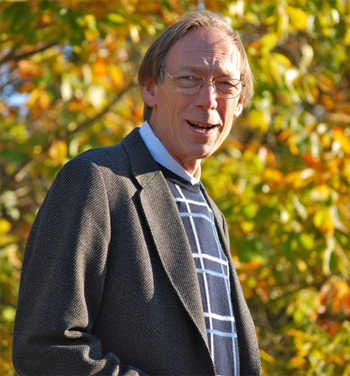Peter Arzberger’s professional life has been full of international, multidisciplinary collaborations. Some examples are the Pacific Rim Application and Grid Middleware Assembly (PRAGMA), the Global Lake Ecological Observatory Network (GLEON), and Pacific Rim Experiences for Undergraduates (PRIME) activities. But everything has a start, and Peter believes that exposure to ideas and a variety of opportunities has a powerful influence on one’s career and life. In high school, Peter participated in a summer research experience in Mathematics that opened the door to what he could do, which he did not quite know at the time. A year abroad in Germany and Spain, during his Junior year at University, and being immersed in multidisciplinary research in grad school, helped him explore other approaches to addressing cultural and scientific issues and appreciate the power of collaboration.
From a student to his multiple accomplishments, Peter recognizes the role the US National Science Foundation (NSF) has played. It supported his earliest exposure to research as a high school student and, later, partially supported his research as a graduate student; finally, it supported the key projects Peter was proudest of. He believes serving at the NSF is a way to contribute to the community.
Now, as a member of the UT Austin Portugal Program’s External Review Committee, a role Peter excitedly participates in, he values how this partnership between Austin and Portugal embodies an international, collaborative approach to advance science and technology and contributes to society. Learn more about Peter Arzberger’s enriching career below.
You started your academic journey by graduating in Mathematics at the University of Massachusetts Amherst, followed by a PhD at Purdue University in the same field. How did this interest in mathematics spark? What did you find the most fascinating about this field?
My interest in mathematics started before attending college. I was fortunate to be exposed to and challenged by an innovative approach to math in seventh and eighth grade (in Tyler, Texas). Later, between my junior and senior year in high school (Medfield Massachusetts), a chemistry teacher encouraged me to apply for a summer program (I chose math rather than chemistry) and attended an NSF program at the University of New Hampshire for six weeks. There I met junior faculty from universities across the country, who loved their subject and involved students in doing math. These experiences were the foundation of what I would do later.
During college, I explored many interests, spent a junior year abroad in Freiburg, Germany, then extended it for several months in Málaga, Spain. Upon returning to my senior year in college, I had to decide. What should I major in to finish that year? I assessed my strengths in math, and with the help of faculty, ended up taking over 10 math classes over the two semesters.
With a math degree, I worked for two years as an actuary. Realizing that was not the life I wanted, I returned to school, first in Germany, then I applied to schools in the US, both in mathematics and Folklore, an interest sparked by my earlier year in Germany.
Ending up at Purdue University, I was drawn to a professor who worked at the interface of mathematics and population genetics, which has a rich history of interactions. Working with him, I also worked with his colleague in genetics, went to some lab meetings to see what another discipline did. For my thesis, I worked on a conjecture about certain animal and plant breeding systems. This required both a mathematical (probabilistic) model of the system and some initial computer simulations (funded by the NSF) to understand these systems (on what was a large computer at the time).
Since that time, my career has been in the overlap area of mathematics, biology, and computing. Initially, there were few others, but as people started working on the human genome project, this area expanded.
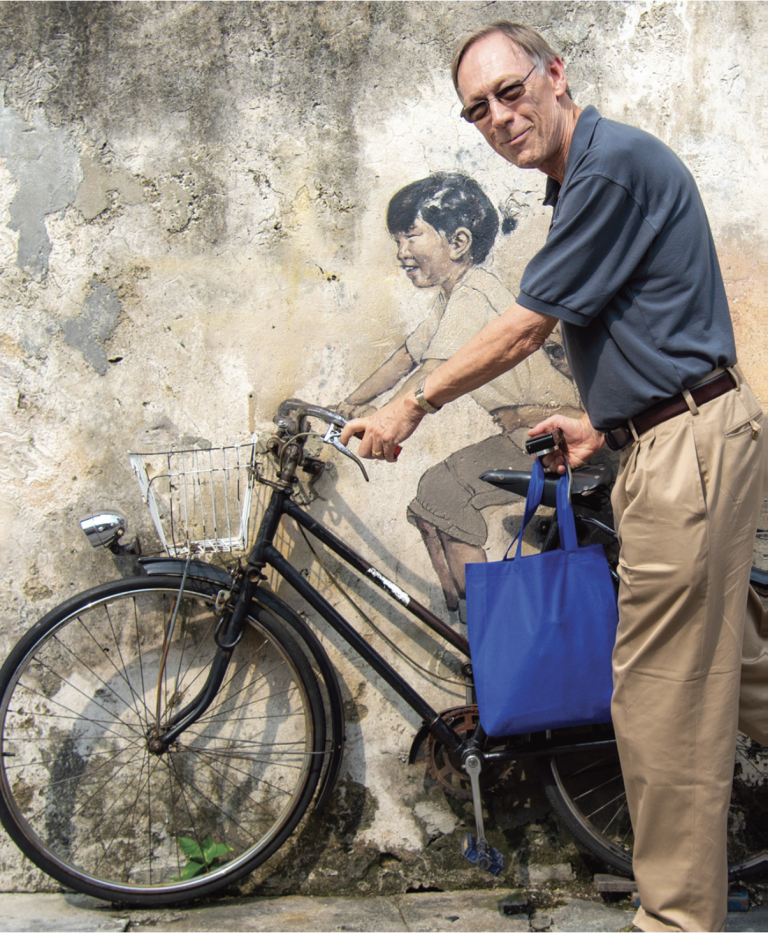
Although your background is in Mathematics, some of your research interests include Ecology and Genetics and the combination of those with computer science. Can you explain more about the research you carried out? How did the opportunity to combine these different fields come about?
As noted, my first exposure to combining mathematics with computing and biology came during graduate school. My advisor was interested in that area, and I enjoyed the insights mathematics could give to biology and computing to mathematics.
After graduate school and later while at NSF and at the San Diego Supercomputer Center, I observed and later helped grow the interface between mathematics and computing with multiple areas of biology: structural biology to understand protein structure from knowing its sequence of amino acids; neuroscience to understand neurotransmission; and ecology to understand the interactions of physical processes with biological ones, at different spatial and temporal scales. I worked with members of the Long Term Ecological Research (LTER) Network, nationally and internationally.
As new technologies emerged (or became affordable), I was interested in helping fields that could be transformed by them. For example, as wireless sensor networks became available to ecologists, new measurements were possible at both spatial and temporal scales, gaining new understanding of shorter cycle phenomena not captured by only annual trips to the field. The ability to deploy wireless networks of sensors to observe lake dynamics, and the willingness of that community to share experience and data, led to improved models to understand the dynamic interaction between temperature and phytoplankton, leading to possible anoxia in deeper cold water, rendering a lake unlivable for deep-dwelling fish.
One eye-opening experience was participating on a small committee to help provide a written assessment of four bids to the Organization of Economic Coordination and Development (OECD) to host the Global Biodiversity Information Facility (GBIF). The GBIF concept, of creating a place to share biodiversity data, recognized the importance of biodiversity and biology’s intense data needs. The assessment required visiting four sites in Europe and Asia and producing a written on-site assessment of each bidder’s facilities and qualifications (Spring, 2001). Knowledge of NSF’s review process was important in creating a strong report.
In a policy-oriented activity, I led a working group reporting to the Organization of Economic Coordination and Development (OECD) on access to publicly funded data. The work of this international committee helped inform OECD on the postures of data produced with public funds. (Fall 2001 to Spring 2003)
From 2009 to 2021, you were involved in the National Science Foundation as a Director of the Division of Biological Infrastructure and Senior Science Advisor for Computer and Information Science and Engineering. What did your work in NSF entail? Are there any moments that you can highlight during this time?
I have served at the US National Science Foundation (NSF) on multiple occasions, and service in different capacities and in different disciplines. During my first service, from 1988 to 1995, I was a Program Officer, managing the review process and recommendations for awards, for my first few years in the Probability and Statistics Program within the Division of Mathematical Sciences and later in the Computational Biological Activities in the Division of Biological Infrastructure in the Directorate of Biological Sciences. Working at NSF was an opportunity to serve the community, meet many researchers and learn about emerging research directions. Moreover, it affords a Program Officer to see connections with other disciplines. For example, I served on a cross-cutting committee to create funding opportunities for scientist teams in High-Performance Computing.
On my second tour, I served one year as a Division Director in the Division of Biological Infrastructure, which focuses on instrumentation, software, and training opportunities for the biological sciences. During part of my second year, I had the unique opportunity to serve for six months as an Acting Assistant Director for Computer and Information Sciences and Engineering (CISE), which comprises four divisions. I learned about a new level of management, and I learned a tremendous amount about computer science research and its areas of interaction with other disciplines.
On a third rotation at NSF, I worked in the Office of the Director as Senior Advisor, with a key responsibility of interacting with the National Science Board Office. The Science Board advises the NSF Director, approves budget submissions, reviews major investments, and provides policy guidance. Later I was fortunate to return to CISE as a science advisor, and even had the opportunity to be acting Division Director in the Computer and Network Systems Division, which handles infrastructure for the computer science research community.
During my time within the Office of the Director, I co-led a cross-agency working group to help clarify the most publicly visible aspects of NSF review and award process, namely describing the work being supported by NSF and ultimately by the US taxpayers. The working group involved representatives from each discipline and policy.
Finally, NSF rehired me as a part-time consultant to help create materials for the new Assistant Director (AD) for CISE. The AD position changes every two to four years, and there is a great deal to learn about NSF to be an effective manager, leader, and spokesperson for the discipline and the Foundation.
For the over thirteen years working, off-and-on, for NSF, in various positions and disciplines, I continue to be impressed with the dedication of the NSF staff, program officers, division directors and ADs. Without their dedication, science and technology advances in the US would pale.
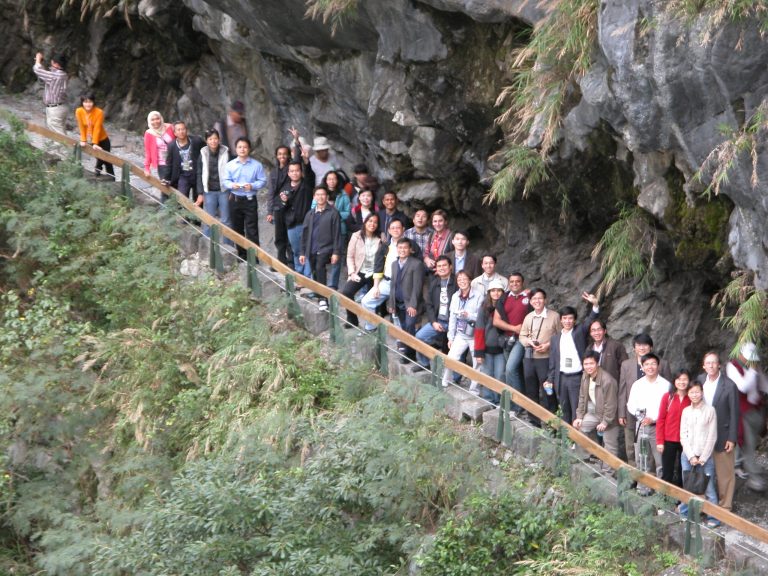
The Pacific Rim Application and Grid Middleware Assembly (PRAGMA), a community you’ve helped found, unites scientists from the Pacific Rim countries to address scientific questions of high societal impact with information technology. How did this idea come about? Are there any moments where you felt this community bore fruit in solving complex issues?
Past is a prologue to the present and future. Experiences gained have ways of reappearing. By the late 1990s and early 2000, there was a growing movement to use the increasingly networked large computers to make an even greater grid computer. The grid computing model was likened to the electricity grid: a researcher plugs in her computer to the grid and is able to access the computing power she needs.
At that time, there were international communities forming to help create guiding principles for this computational grid, such as the Global Grid Forum and science communities requiring computing (e.g. GBIF and LTER). During the growing exploration of grid computing, an NSF program officer kept encouraging me to take advantage of my geo-location (then, in San Diego) to build collaborations with Asia. Together with a colleague, we ran a series of three workshops, one funded by NSF, to explore what an international, Asia-centric community could do to realize the vision of a computational grid. From 2002 to 2019, with additional support from NSF and many member institutions, we held some 37 workshops, pushed the limits on technology, experimented across shared facilities, and launched several activities. The lessons we learned showed that the grid concept needed revision, and several larger computer infrastructure centers incorporated our ideas.
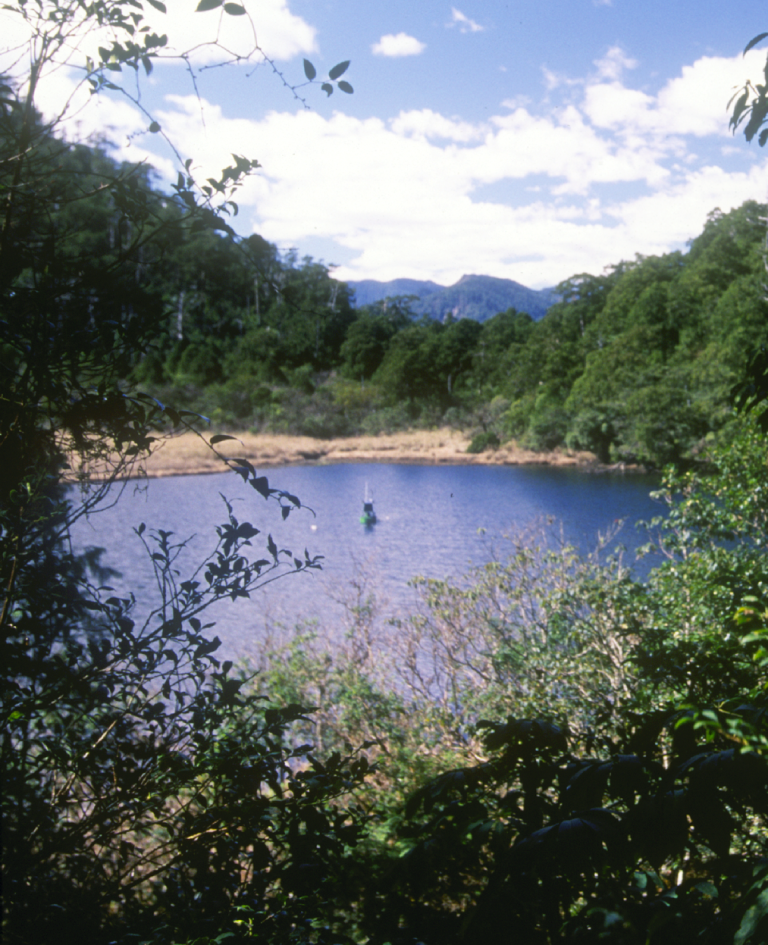
One project launched by PRAGMA grew from our initial experiment to instrument a lake in Taiwan with a wireless sensor network. This small project, called GLEON, which persists to this day, gave researchers insights into the impact of typhoons on lake physical dynamics and expanded to a network of limnologists. It provided me an opportunity to be part of a team that went into the field to upgrade sensors on a lake in Taiwan. Once, given the importance of updating the sensors, the team wanted to rush to the lake, high in the mountains, before a typhoon struck. We got to the lake, but by the time we were ready to return, the road was closed in several stretches, mud covering it in several places, and in one place, the road disappeared down the mountainside, leaving only the cement curbing nearest the mountain intact. It was a new experience for someone who worked mostly in an office, and it was new for the lake scientists from Wisconsin who had not experienced the effects of a typhoon. One of them wrote a song about it, lives on the internet, the stuff of legends! [We finally got off the mountain through walking, riding on motorbikes, and finally crossing the chasm on the intact curbing.]
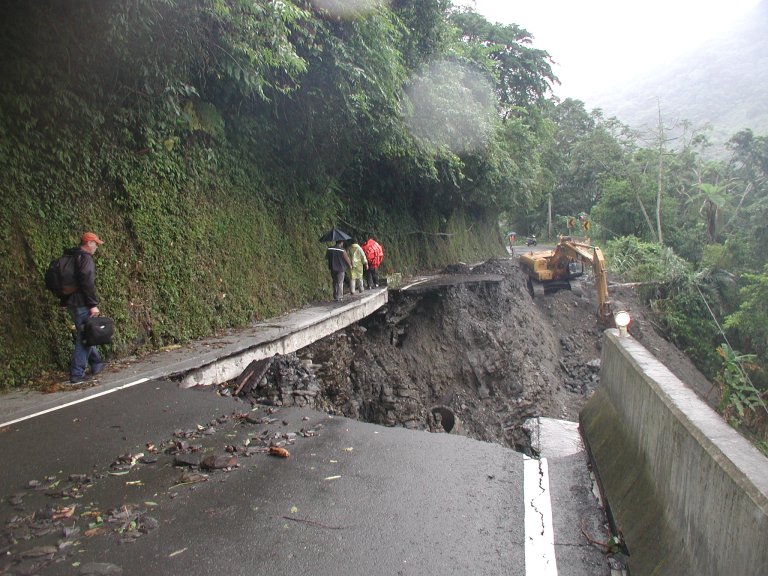
A second activity that built on the PRAGMA people network and directed by a University of California San Diego (UCSD) colleague was PRIME, the Pacific Rim Experiences for Undergraduates, which offered UCSD students eight-week funded research project internships in PRAGMA member labs, in Japan, Taiwan, Australia, New Zealand, Malaysia, China, and India. These internships advanced science, PRAGMA collaborations, student interest in research, and their understanding of international collaboration (from 2004 to 2015). This program prompted two other sites, one in Osaka Japan, the other in Melbourne and later Queensland, Australia, to modify the program and send their students to PRAGMA members. Over the 12 years of PRIME, we touched the lives of approximately 200 students. Knowing how much my junior year abroad influenced my life, PRIME was an opportunity to contribute to a new generation, not just of scientists, but of citizens.
Finally, I want to emphasize these activities were collaborations. Many people helped make these possible, and I am pleased many colleagues are still working together and have become friends.
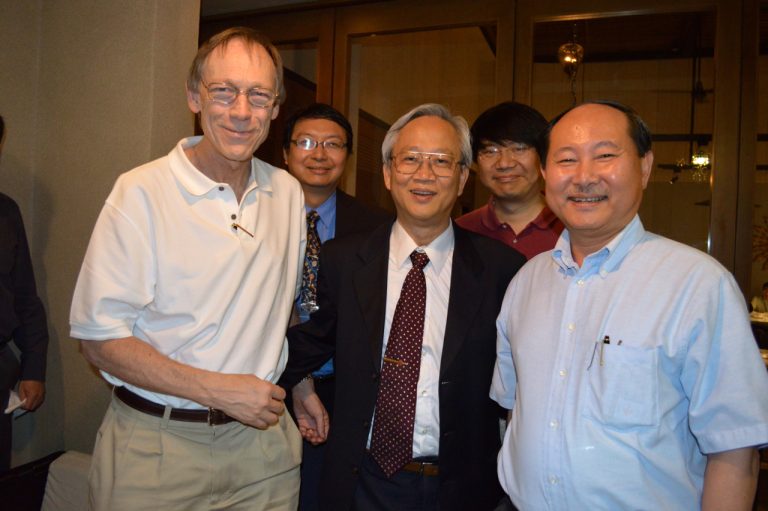
As a Chair and Member of the UT Austin Portugal Program’s External Review Committee in the Area of Advanced Computing and as a former Executive Director of the San Diego Supercomputer Center, what are your thoughts on the future of Advanced Computing in the next decades and the evolution of Artificial Intelligence (AI) tools?
The desire to use larger, more powerful computers will continue to grow, allowing researchers to refine models of the real world to include more information. Furthermore, with the increased interest in using data (e.g., from sensors), the type of computing architecture will evolve. Research communities will need resources to support community data and policies that will insure the integrity of the data and acknowledge the contributors. Finally, the academic world is playing catchup with the computing power within some industries.
The increase in computing power, the growing amounts of accessible data, and improved tools have helped AI tools emerge. How best to use those tools to advance science and benefit society is an ongoing challenge.
What are your thoughts about this partnership between Austin and Portugal? As someone from the USA, did you had the opportunity to contact with the Portuguese Research Ecosystem before?
After my third tour at NSF, I spend two months in Porto, as a guest of the Institute for Systems and Computer Engineering, Technology and Science (INESC TEC), learning about their projects and their model for funding research and its transition to practice. Though far from the Pacific Rim, INESC TEC began participating in PRAGMA meetings and has developed strong ties with several institutions along the Pacific Rim.
When I was invited to participate in the UT Austin Portugal Program, I was delighted to learn more about the Portuguese research community. I hoped that my experience developing and nurturing sustained, multidisciplinary research collaborations would benefit the Program. I have been delighted to see the trust among the trans-institutional partnership, significant research collaborations, wonderful international training opportunities for Portuguese and UT Austin researchers, and demonstrated outcomes that benefit Portuguese society.
The people and institutional trust and progress of this Program will be essential to address the problems facing our shared planet.
Any final thoughts?
I want to thank the staff of the UT Austin-Portugal program of giving willingly and generously of their time to keep the External Review Committtee (ERC) well informed and served. Also, I am blessed to have such talented members of the ERC to work with to provide input to this valuable program.
And thank you for the opportunity to share these comments.

